
In this article, you will be learning about all the types of turtles that exist in mother nature and are a wonderful choice to have as a pet because they don’t need a lot of attention.These are the type of turtles that you won’t mind having more than one as they aren’t too social with humans. However, be mindful of their territorial behavior if you get more than one. Okay, let’s cut down to the chase.
1. Types of Turtles: Painted turtles:
Number one on the list are the painted turtles. They have several subspecies with distinct characteristics of their own. Now, how would you know if it’s a painted turtle or not? There are four most popular subspecies of the Painted turtles:
- Eastern Painted Turtle: Found mainly in the Eastern part of North America, that includes the Great lake region.
- Midland Painted Turtle: Found in the Mississippi river basin, situated in the central part of North America.
- Southern Painted Turtle: Includes areas near the Gulf of Mexico in the southeastern side of the United States of America.
- Western Painted Turtle: From the Pacific coast to the Rocky mountains they are usually found.
The Painted turtles usually have a flat oval shaped shell that helps to enhance its swimming capabilities. The shell is generally dark olive in color but the distinctive feature that makes it different from the rest of the turtle species are the bright colorful abstract strokes of paint brush on the shell making it noticeable. These patterns can be red, orange or yellow in color and vary in design and intensity. These turtles can grow from 4 inches to 10 inches depending on various conditions. When it comes down to the size, female painted turtles are usually larger than the male and the size difference is very much evident when they fully grow or turn adults. With proper care and maintenance they can live for decades.
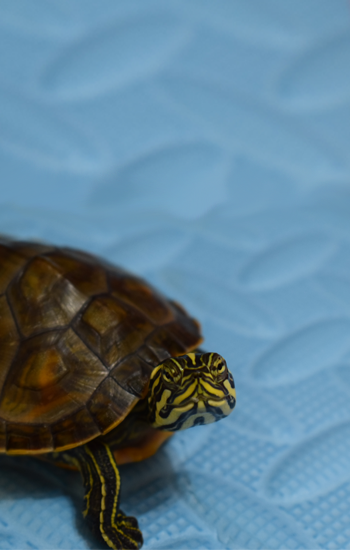
The lower shell or the plastron is typically hinged so that the turtle can protect itself and the color is yellow with dark markings.
The painted turtles are quite lively and it’s very satisfying to just look at these turtles. The heads of these turtles are so vibrant, they usually have bright red, yellow or orange stripes starting from their eyes to the neck that almost look like war paints. They somewhat represent the Teenage mutant ninja turtles, that’s what I think haha.
Just like the painted turtle’s head, their body and limbs have red and yellow stripes. Adding to that, their feet look webbed making them great swimmers.
However, the male painted turtles have longer and curvier nails than the female ones which they utilize during courtship displays.
How to know the age of these types of turtles?
The only way to find this is to look at the shell of the painted turtles that can give you a clue about its age. You will find growth rings that look similar to tree rings on the scutes of the turtle shell.
2. Types of Turtles: Box Turtles
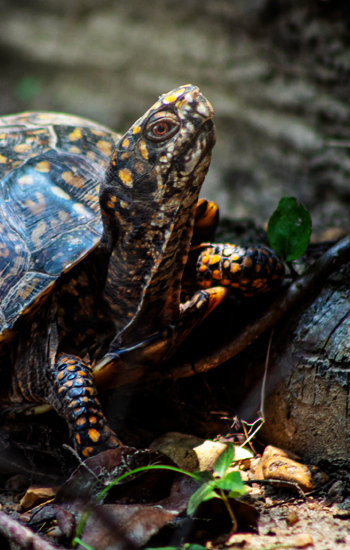
Second on the types of turtles, most popular to have as pets are the Box Turtles belonging to the genus Terrapene. Box turtles are a native to North America with different subspecies distributed in various parts of the region. They are widely native from the southern part of Canada to mexico. Box turtles usually grow from 4 to 8 inches and live till their 40s happily. There are several subspecies of the box turtles and the most common ones are:
- Eastern box turtle: native to the Eastern part of the United States. They are known for their high-domed shells with twisted patterns.
- Western box turtle: found in the western regions of the United States mostly found in dry and semi-dry environments. One distinctive feature are their yellow markings on the shell.
- Three toed box turtle: Native to the southern region of the United States. They are identified by their three toes on each of their hind feet.
- Ornate box turtle: found mainly in the central United States. Popular for their brownish shell with bright yellow line patterns on their shell.
- Gulf coast box turtle: native to the gulf coast area of the United States of America. They are found in various areas near the wetlands and the coastal areas.
3.Types of Turtles: Red Eared Slider Turtle
Next on the list, it’s the widely known Red eared slider turtle that belongs to the terrapin species. There are around 50 members of the Emydidae that are also called terrapins.
Red eared slider turtles are semi aquatic, the most common and popular types of turtles that are kept as pets worldwide. These turtles are a native to the southern United states i.e. illinois to the Gulf of Mexico. These turtles have a lifespan of around 20 to 30 years or so, in some cases they even live longer.
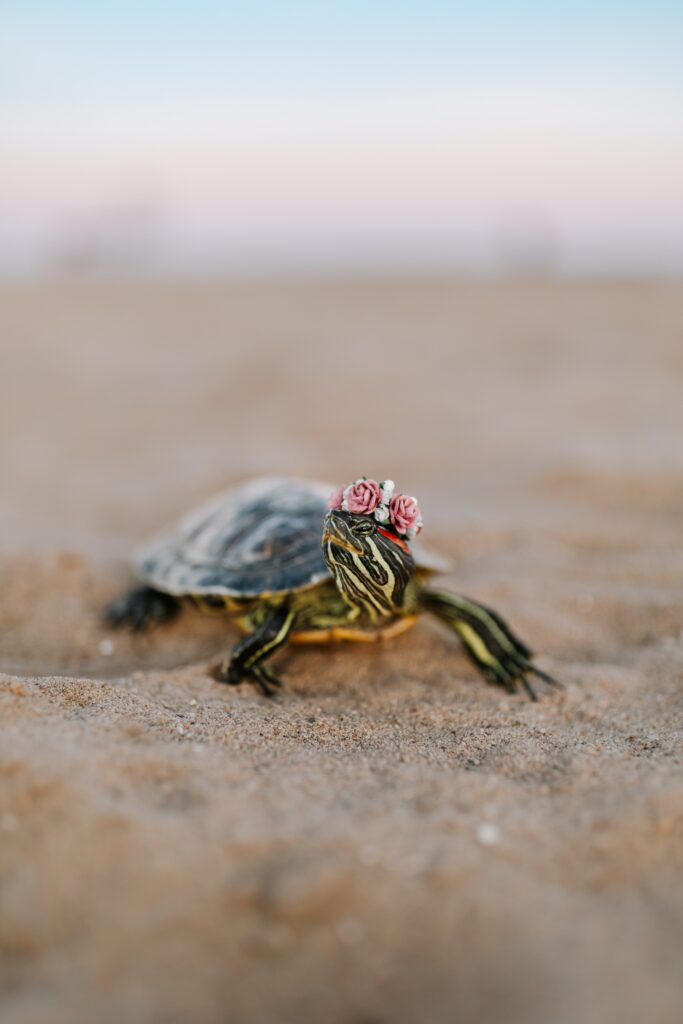
Red Eared sliders typically have an oval shaped shell and they have dark green skin with bright yellow stripes.They can grow up to 12 inches on the basis of their living conditions.
They are funny looking and they are the curious kind of turtle. Turtles actually prefer to stay reserved and not that social by nature in general. Just so you, turtles have their own unique personality, some might be very active and outgoing while others can be lazy and reserved.
However, the Red Eared Sliders show a strong feeding response with curiosity which is fun to watch. They will eagerly approach the source of food when they are served knowing that it’s the time for their meal.
You can’t really expect them to be interactive like a dog or a cat. Understanding and respecting their natural habitat is the only way to take care of them appropriately.
Red Eared Sliders are naturally omnivorous which means they can live on plants and animals both. Just like the other omnivorous you can feed them commercial pellets, leafy greens and insects, fish and small portions of cooked meat.
Anyways, before you get your very own RES buddy, check your local and international laws as they might be subject to regulations due to conservation concerns.
4. Types of turtles: Snapping turtles
One of the most popular types of turtles that you can come across are the Snapping turtles you can already guess the reason behind their fame. Yes, they are famous for their appearance and their powerful jaws. The average lifespan of this species is around 40 years but there are cases where they are observed to be living for even longer periods of time in the wild. But their growth is quite slow compared to the other species. And they can grow from 12 to 18 inches at their very best.
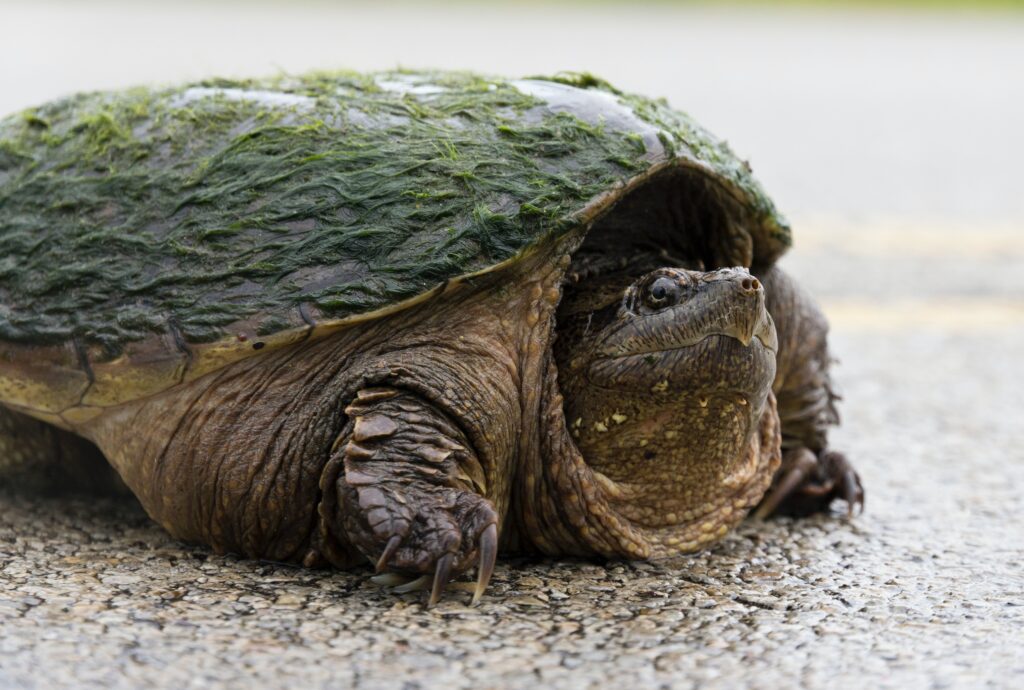
The common Snapping turtles have dark brown, rough and edgy shells. They have large heads with powerful beaks like mouths with a flexible neck that extends very quickly when it’s time for them to snap.
These turtles can be found in the freshwater ponds, rivers and lakes. They prefer the water to be calm and peaceful with plenty of vegetation or plantation so that they have an adequate amount of hiding spots.
Snapping turtles are usually found in the North of America, in some parts of Southern Canada and the Gulf of Mexico.
Snapping turtles are primarily aquatic but they also come to the lands for basking or to lay eggs. They are quite defensive by nature and when threatened they will just snap with their remarkable jaws at anything and everything within a blink of an eye.
These turtles generally eat anything, they have a wide range of food habits starting from leafy greens to insects, small mammals and fish. They are known as scavengers as they feed on dead animals and opportunistic prey.
However, Snapping turtles require specialized care and maintenance and they are not recommended for newbies. They require a big aquatic environment with proper filtration and hiding spots. Always be careful if you have kids at home as it is quite unsafe for children to be around these turtles as they might snap at them feeling threatened.
5. Types of Turtles: Soft shell turtles
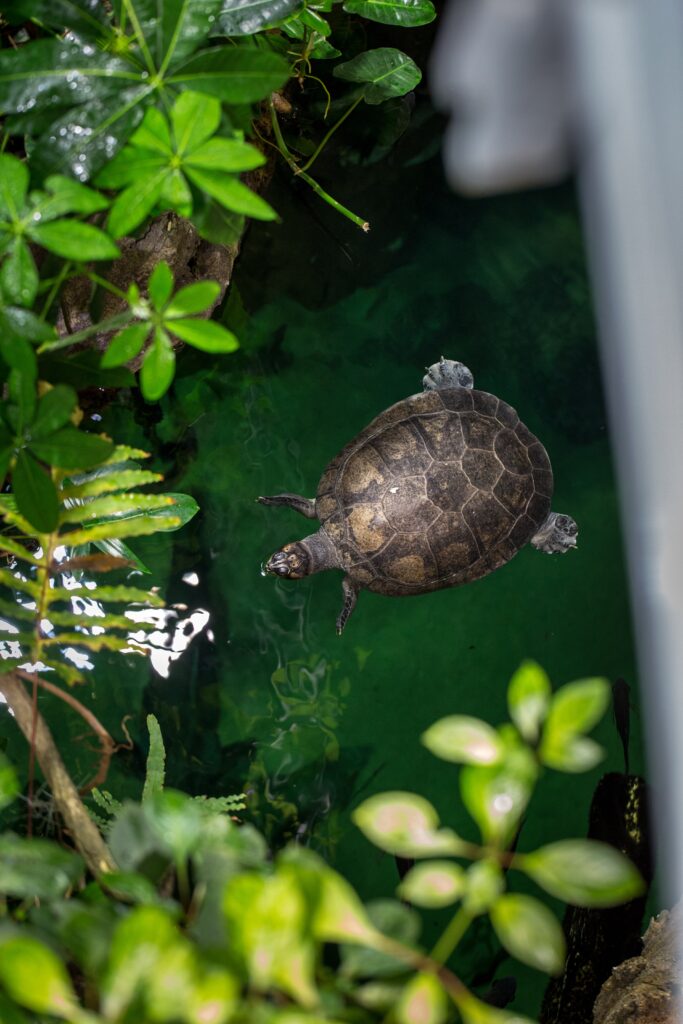
Belonging to the Trionychidae family, Soft shell turtles are identified by their unique soft and flat shell that is nothing like the hard and boney shell of all the other turtle species. Soft shell turtles are adapted to live in aquatic environments.
Soft shell turtles have soft and leathery shells that allow them to be very flexible underwater but their shell is quite flat unlike the oval shaped ones. The adults grow up to 24 inches and their average lifespan is around 30 years.
These turtles are widely found in the ponds, rivers and lakes of North America, in various parts of South East Asia.
To avoid predators and to hunt their prey, soft shell turtles prefer to be in freshwater with muddy or sandy bottom so that they can bury themselves partially in the substrate.
Unlike the prior list of turtles, Soft shell turtles are carnivorous and their diet includes fish, aquatic insects, mollusks and small amphibians.
Soft shell turtles are popular as pets but they require proper aquatic setup where the water always needs to be clean and well maintained.
6. Types of Turtles: Mud turtles
Mud turtles or Musk turtles originally from Genus Kinosternon are quite popular now among the turtle enthusiasts because of their quirky appearance, pungent smell and their manageable size makes the mud turtles very interesting and fun to have for those who don’t want to miss the chance of having them as a pet.
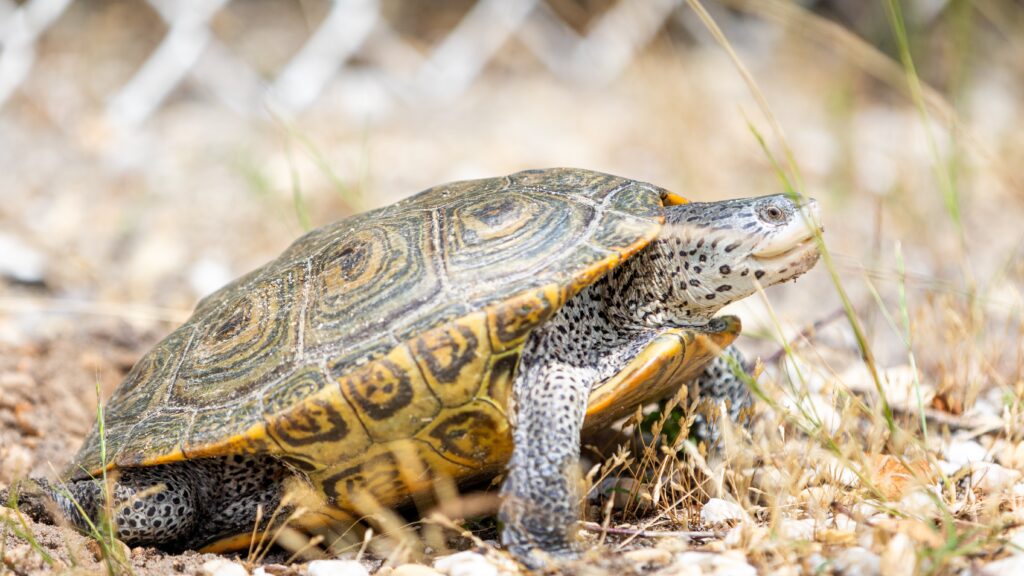
There are three different types of common Mud turtles that you can find in the pet shops:
- Eastern Mud Turtle: Native to the Eastern United States, these mud turtles are relatively small in size, the adults typically reach lengths of 3.5 to 5 inches. Features a domed shaped shell that is usually dark brown, black or olive in color. By nature the Eastern Mud turtles are omnivorous, that means they love to eat both plants and animals, insects and fish.
- Striped Mud Turtle: This mud turtle is also known as Florida Mud turtle as it is found mostly in the southeastern parts of the US. They are similar in size as the Eastern Mud turtles and look identical to the Eastern Mud turtles. Although you might see yellow stripes on their head and neck. Omnivorous Striped mud turtles have the same category of diet
- Mississippi Mud Turtle: This species of turtle is just as similar to the prior species from every aspect of their living style and habitat etc.
